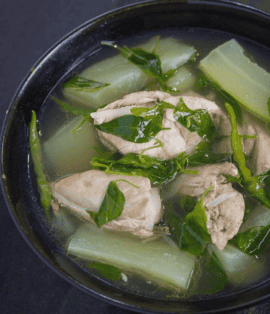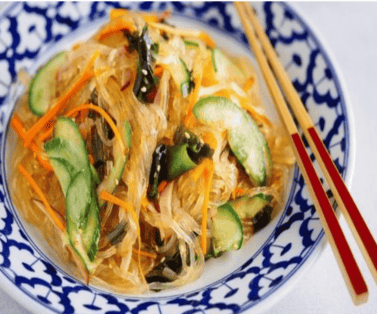Food has a unique ability to bring people together, breaking down cultural barriers and creating a sense of community. Sharing a meal with others promotes conversation, laughter, and a sense of belonging, fosters connections, and strengthens relationships. Food is a universal language that speaks to the heart, and its power to bring people together is truly remarkable.
Asian cuisine is rich in flavors, textures, and aromas that are beloved by foodies all around the world. From the fiery spices of India to the delicate umami flavors of Japan, Asian cuisine has something to offer everyone. And with May being Asian Pacific American Heritage Month (APAHM), it’s the perfect time to celebrate the incredible diversity of Asian culture and cuisine!
The Asian Connections Affinity Group (ACAG) within the Society of Women Engineers (SWE) wants to celebrate the diversity and beauty of Asian cuisine this APAHM, while also honoring the people and cultures that make it so special. We believe that food has the power to connect people and bridge cultural divides, and we hope that this cookbook will serve as a testament to the power of food to bring us together.
To submit your recipe, please fill in this Recipe Template and email the completed document to asianconnections_ag@swe.org. We welcome all types of recipes from all Asian countries and regions.
To inspire you, below are examples of recipes that showcase the incredible variety of flavors, ingredients, and techniques used in Asian cooking.
Recipes for Asian Pacific American Heritage Month (APAHM)
Chicken Tinola (A Chicken Dish in Ginger Broth from the Philippines)

Chicken Tinola is said to have been invented in the late 1800s, but some believe the recipe was developed way earlier. It is a simple one-pot dish wherein chicken pieces are cooked in ginger broth — perfect for colder seasons or if you’re feeling under the weather. It is so popular that Jose Rizal, who is considered a national hero of the Philippines, featured it in his first novel, Noli Me Tangere, and shared his personal recipe in his final penned work, Mi Ultimo Adios.
In the Philippines, green papaya slices are simmered with the chicken in rice washings. Then chili leaves are added once the meat and papaya are soft enough to eat. In the U.S., chayote squash, chicken broth, and spinach or bok choy are often used instead. Enjoy with warm rice and fish sauce as dipping sauce.
Chicken Tinola Recipe
Chicken Tinola Recipe (with Chayote Squash and Bok Choy)
Navratan Korma (Vegetarian Dish from India)

It is believed that this dish is named after the nine jewels or courtiers of the Mughal Emperor Akbar. In the Hindi language, ‘nav’ means nine and ‘ratan’ means a jewel. So the English translation of navratan is nine jewels. And korma is defined as a dish where meat or vegetables are braised with yogurt, cream, or stock added.
Navratan Korma is a characteristic Mughal dish that can be traced back to the 16th century Mughal incursions into the region. It is an Indian vegetable korma with nuts, paneer cheese, and an adjustable list of vegetables. It is in a tomato cream sauce as opposed to the usual yogurt-based sauce.
Harusame Salad (Glass Noodles Salad from Japan)

Harusame is the Japanese name for cellophane or glass noodles. The kanji (Japanese character) for these noodles translates to “spring rain” because they look like gentle spring rain when cooked. Harusame came to Japan from China during the Kamakura period (1185-1333) as a vegan food for monks. This dish has been passed down from generation to generation for 800 years!
Besides glass noodles, Harusame Salad commonly uses three other main ingredients: julienned cucumbers, carrots, and ham. Variations include wakame seaweed, shredded egg omelet, tomatoes, bean sprout, etc.
Dakdoritang (Sweet & Spicy Chicken Stew from Korea)

Dakdoritang is a popular Korean dish that is believed to have originated in the 20th century, with the introduction of mass poultry farming in Korea.The dish features tender chicken, potatoes, and carrots braised in a spicy, savory, and slightly sweet chili sauce. It is also sometimes known as dakbokkeumtang, meaning “fried chicken stew” or dakmaeuntang, meaning “spicy chicken stew.” All three names refer to the same dish — a hearty, nutritionally delicious Korean chicken stew that combines bold flavors of both sweet and spicy. It’s usually served on top of rice.
If you are interested in connecting with the ACAG community, check out our various platforms at https://linktr.ee/SWEAsiansAG.
Authors
-

Victoria Png (she/her) is a Senior Project Engineer for 3M Company and a dedicated leader in global DEI groups. Victoria is currently the Chair of 3M SWE, Awards Lead for the SWE ACAG, and co-leads the Connections Pillar of 3M’s Asian Employee Resource Network. She holds a BSE in Mechanical Engineering and a Certificate in Markets and Management from Duke University.
-

Stephanie Song (she/her) is a Senior Quality Engineer at 3M Company and is the Affinity Group Lead for SWE Asian Connections Affinity Group (ACAG). Stephanie is also involved in global DEI groups both within the Asian Employee Resource Network at 3M, 3M SWE, and externally with SASE. She holds a Bachelor of Engineering and Master of Engineering degree in Chemical Engineering from Stony Brook University and Cornell University, respectively.






